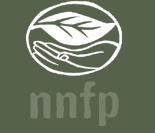Many rural communities across the United States have historically depended on neighboring forests for their cultural, economic, and environmental well-being. In the 1990s, faced with a barrage of daunting challenges including ecological degradation, unemployment, emigration and the decline of community capacity, globalization, and the lack of meaningful public involvement in decision making on public lands, rural communities began to organize to gain greater control of their future, and to ensure that forest management is ecologically sound, economically viable, and socially just.
It was the convergence of these groups that led to the NNFP. In true grassroots fashion, the groups these communities formed took many shapes and sizes, but most tended to be community-based non-profits or small, “green” businesses. Their activities covered an array of disciplines, including watershed protection and restoration, eco tourism, job training, non-timber forest products, and value-added wood manufacturing. Many groups represented the first efforts by communities to come together to solve difficult problems, and many of these organizations have grown up to become community institutions.
At the same time, sparked by many of the same political and economic changes, forest workers–those who plant trees, thin forests, gather mushrooms and floral greens, for example–were also organizing. Their efforts helped broaden the definition of “community” to include all people that live and work in the woods, and, as this workforce includes a large number of working class people and people of color, helped bring issues of cultural diversity and social justice to the fore of the community forestry movement.
Over the last decade, these groups joined up with researchers interested in making research accessible, participatory, and practical; agency officials trying to change the system from within by humbling themselves, asking questions, and taking risks; and indigenous groups who bring an immense wisdom about the natural world and what it means to tend and heal the land. Through their work, these constituencies are advocating for a fundamental shift in forestry and forest conservation, toward placing greater value on the long-term health of the environment and communities.
Today there are more groups working on community forestry and NNFP has developed its niche in being a catalyst for learning and development of these grassroots organizations and small businesses. From supporting participation in policy to creating learning among the innovators that are our members and friends, NNFP serves as a catalyst for ongoing development of innovations that are good for JOBS AND THE ENVIRONMENT!
